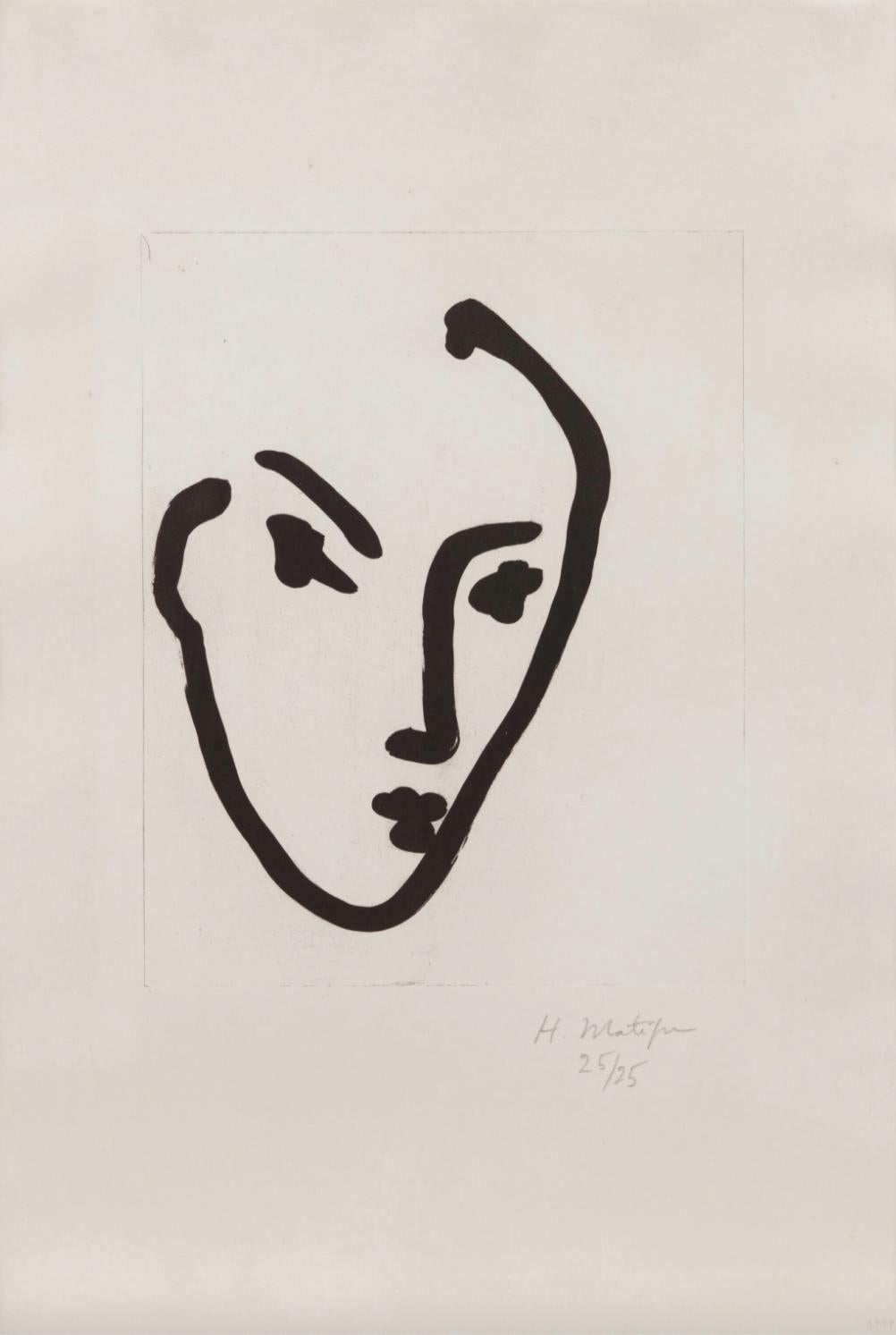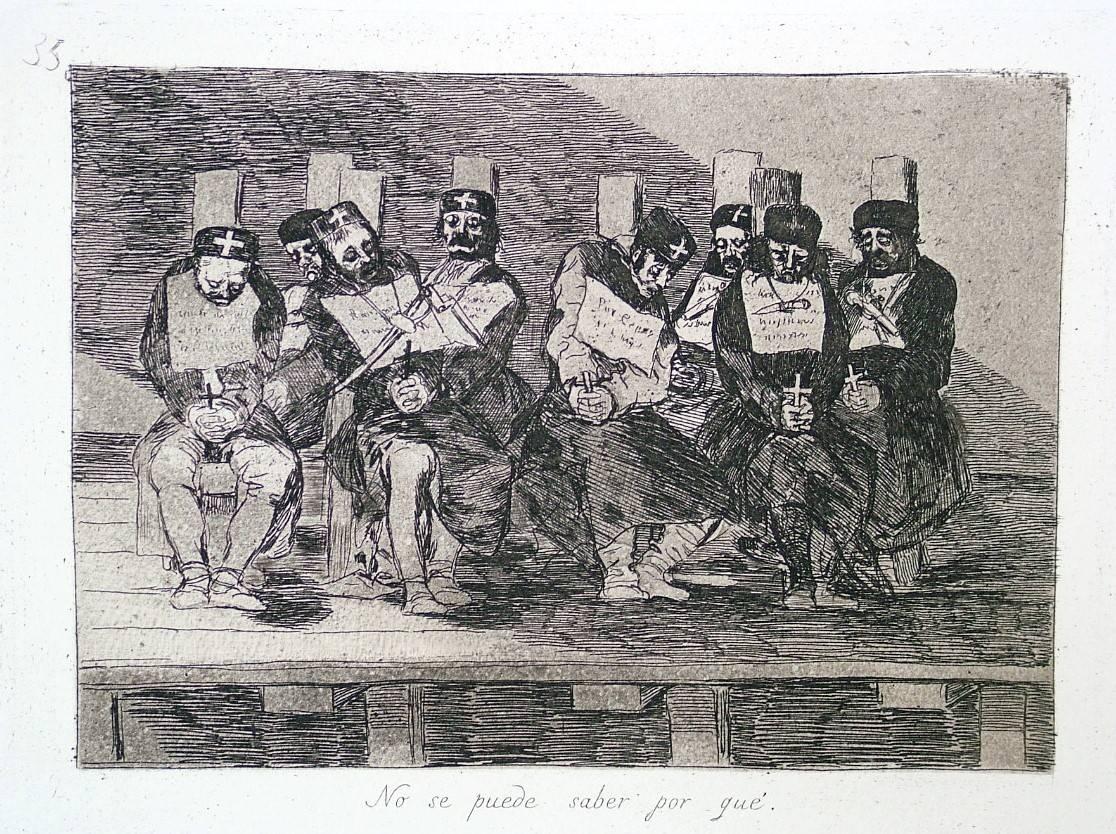Items Similar to Valeria - Etching by Luigi Bartolini - 1948
Want more images or videos?
Request additional images or videos from the seller
1 of 5
Luigi BartoliniValeria - Etching by Luigi Bartolini - 19481948
1948
About the Item
Image dimensions: 24.7 x 32.8 cm.
Valeria is a beautiful etching realized by the artist Luigi Bartolini realized in 1948.
Original etching on china paper applied. Plate dimensions: mm 247 x 328.
Edition of 50 prints.
Hand-signed, titled and numbered on the lower margin: Valeria 7/50 Bartolini. Signed and dated on plate on the lower left corner: “Bartolini 48”. Titled on plate on the upper side: Valeria.
In good conditions, yet with slight foxing.
One of the specimen is now preserved at the Civica Raccolta Bertarelli in Castello Sforzesco in Milan.
Luigi Bartolini
Cupramontana (Ancona), 1892 – Rome 1963
An accomplished Twentieth Century Italian engraver, painter, writer, art critic and engraver. He spent his early years living in Rome, Siena, and Florence and was professionally formed through university courses in art and medicine, museums, and the Academy Belle Arti. He begins to study art in 1912 with a special preference for Goya, Rembrandt, and Fattori.
His success as an engraver arrives in 1924 with his exhibitions at Bragaglia’s House of Art and Casa Palazzi di Roma (70 etchings). In 1925 he participates in the II Roman Biennial and then in the Venice Biennial from 1928 to 1936.
He is considered, along with Morandi, the greatest Italian engraver. His expositive work continues with intensity in the post-war period with one-man exhibitions in both Italy and abroad. His last one-man exhibition takes place at the XXXI Venice Biennial and at the National Chalcography in Rome in 1962.
Bartolini lives through his era in complete liberty, dedicating himself to painting, to art criticism, to literature and teaching. This intellectual and artistic autonomy is well reflected in his engravings and it is exactly because of this characteristic of intellectual autonomy that he has never really belonged to the Scuola Romana although he was very attached to it because he frequented the Roman environment and it’s artists who he would often exhibit with. His literary production is gathered the volumes Polemiche (1940), Credo d’artista (1945), Il Fallimento della Pittura (1948) and Poesie 1911-1963(1964). As a critic, he collaborates with numerous magazines such as “Il Selvaggio”, “Quadrivio”, “La Tribuna”, “L’Ambrosiano” etc. After the war, “Bicycle Thieves” (1946) was used as an idea by De Sica for the homonymous film (1948), an Italian Neorealist masterpiece.
- Creator:Luigi Bartolini (1892 - 1963, Italian)
- Creation Year:1948
- Dimensions:Height: 16.74 in (42.5 cm)Width: 12.6 in (32 cm)Depth: 0.08 in (2 mm)
- Medium:
- Period:
- Condition:Insurance may be requested by customers as additional service, contact us for more information.
- Gallery Location:Roma, IT
- Reference Number:
Luigi Bartolini
Luigi Bartolini was an Italian painter, writer and poet. He is best known for his novel, Bicycle Thieves, upon which the Italian neorealist film of the same title, directed by Vittorio De Sica, was based. He published more than 70 books during his lifetime.
About the Seller
4.9
Platinum Seller
These expertly vetted sellers are 1stDibs' most experienced sellers and are rated highest by our customers.
1stDibs seller since 2017
6,767 sales on 1stDibs
Typical response time: 2 hours
- ShippingRetrieving quote...Ships From: Rome, Italy
- Return PolicyA return for this item may be initiated within 14 days of delivery.
More From This SellerView All
- Ancient Map - Zeilan - Etching by Johannes Janssonius - 1650sBy Johannes JanssoniusLocated in Roma, ITAncient Map - Zeilan is an ancient map realized in 1650 by Johannes Janssonius (1588-1664). The Map is Hand-colored etching, with coeval watercoloring. ...Category
1650s Modern Figurative Prints
MaterialsEtching
- Orbis Terrarum - Etching by Johannes Janssonius - 1650sBy Johannes JanssoniusLocated in Roma, ITAntique Map - Orbis Terrarum is an antique map realized in 1650 by Johannes Janssonius (1588-1664). The Map is Hand-colored etching, with coeval watercoloring. Good conditions with...Category
1650s Modern Figurative Prints
MaterialsEtching
- Cathedral - Etching and Aquatint by Franco Gentilini - 1970sBy Franco GentiliniLocated in Roma, ITEtching and Aquatint. Edition 70/120. 65x45 cm. Excellent condition.Category
1970s Contemporary Figurative Prints
MaterialsAquatint, Etching
- Antique Map - Mare Pacificum - Etching by Johannes Janssonius - 1650sBy Johannes JanssoniusLocated in Roma, ITMare Pacificum is an antique map realized in 1650 by Johannes Janssonius (1588-1664). The Map is Hand-colored etching, with coeval watercolorang. Good conditions with slight foxing...Category
1650s Modern Figurative Prints
MaterialsEtching
- Old Woman with Stick - Etching by Eugène Burnand - Late 19th centuryLocated in Roma, ITOld Woman with Stick is an etching realized by Eugène Burnand (1850-1921) in the Late 19th century. Signed on the plate. Good conditions with foxing. The artwork is realized thro...Category
Late 19th Century Modern Figurative Prints
MaterialsEtching, Engraving
- Map of Mar Del Nort - Etching by Johannes Janssonius - 1650sBy Johannes JanssoniusLocated in Roma, ITAntique Map -Mar Del Nort is an antique map realized in 1650 by Johannes Janssonius (1588-1664). The Map is Hand-colored etching, with coeval watercolorang. Good conditions with sl...Category
1650s Modern Figurative Prints
MaterialsEtching
You May Also Like
- AmigasLocated in Columbia, MOLuca Cruzat, a Chilean born artist, received her MFA from Southern Illinois University, in Carbondale, Illinois (2006). She also holds a master’s degree in foreign Language and Liter...Category
21st Century and Contemporary Contemporary Figurative Prints
MaterialsEtching, Monoprint, Archival Paper
- Narcissist Seeks Similar (Large)By Harland MillerLocated in Bristol, GBEtching with relief printing Edition of 45/50 Signed on the front, numbered on the back Mint Published by Manifold Editions, 2021 Our mission is to connect art collectors to opportu...Category
21st Century and Contemporary Contemporary Figurative Prints
MaterialsEtching
- Nadia au regard attentifBy Henri MatisseLocated in London, GBAquatint on Marais wove paper Edition of 25 Signed and numbered 25/25 in pencil lower right Duthuit 794Category
Mid-20th Century Modern Prints and Multiples
MaterialsAquatint
- Tatoo-Shave-HaircutBy Reginald MarshLocated in New York, NYReginald Marsh (1898-1934), Tattoo-Shave-Haircut, etching, 1932. Signed, titled (“Tattoo-Haircut-Shave”), dedicated (“for Arnold Newman”), and annotated (“Fourth State. First of Two Prints”). Reference: Sasowsky 140. On cream wove paper. In very good condition, with small margins (as trimmed, slightly irregularly, by the artist) (slight foxing in margins), remains of prior hinging verso; 9 7/8 x 9 3/4, the sheet 10 15/16 x 10 5/8 inches; archival matting. A very fine rich black impression; we have not seen impressions of comparable quality on the market. Provenance: Estate of Arnold Newman. Arnold Newman (1918-2006) was one of the great 20th Century masters of photography, and a friend of many leading artists; it is appears that Marsh took special care in printing this impression for Newman. Sasowsky calls for 10 states of Tattoo-Shave, based largely on Marsh’s notes. But the states are not clearly delineated (e.g., his States 3 and 4, one proof each, are characterized by Marsh as “Engraving added”; no information is given for State 5). The design for the print was complete in the first state, and subsequent state changes were not, apparently, major. This impression does not appear to differ in etching lines from the final state impression shown in Sasowsky. Its inscription (as a Fourth State, by Marsh), as well as its rich inking and quality, attest to its being a proof before the edition (of about 34 impressions), but the state of this print (and, presumably of many of the other several proof impressions) cannot at this time be stated with confidence. Marsh printed this impression personally (we recall his famous answer to a question about the size of his editions: “Since I do practically all my own printing, I do not limit the edition. The buyer limits the edition – he rarely buys, I rarely print”). Tattoo-Shave-Haircut depicts a scene in the Bowery, a section of New York’s Lower East Side, during the Great Depression. The building and train structures in the top half of the print recall Piranesi’s Carceri...Category
1930s American Realist Figurative Prints
MaterialsEtching
- One Can't Tell Why - Proof from the Disasters of WarBy Francisco GoyaLocated in New York, NYFrancisco José de Goya y Lucientes (1746 Fuendetodos – Bordeaux 1828), No se puede saber por qué – One can’t tell why ca. 1808–1814, etching, burnished aquatint, drypoint, an...Category
1810s Old Masters Figurative Prints
MaterialsDrypoint, Etching, Aquatint
- COUPLE DE PAYSANSBy Camille PissarroLocated in Portland, MEPissarro, Camille. COUPLE DE PAYSANS. D.125. Etching and aquatint on laid paper. Unsigned. From the posthumous edition of 10 printed in 1923. 4 3/4 x 3 1/8 inches, 118 x 78 mm. (plat...Category
1920s Figurative Prints
MaterialsAquatint, Etching
Recently Viewed
View AllMore Ways To Browse
Luigi Vintage
1962 Italian Film
Goya Plate
Liberty House Vintage
Vintage China Side Plates
Liberty China
Original Rembrandt Etching
Bicycle Plate
328 Art
Goya Engraving
Scuola Romana
Morandi Etching
Retro California Poster
California Retro Poster
Chicago Picasso Sculpture
Fashion Vintage Dress Drawing
Original Concert Poster
Engraving Chicago





